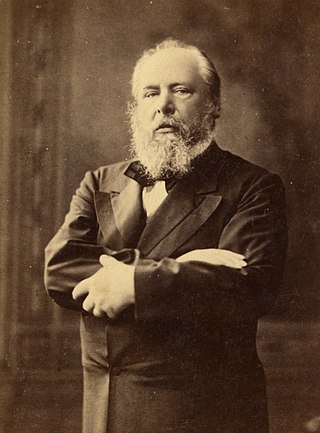
William III was King of the Netherlands and Grand Duke of Luxembourg from 1849 until his death in 1890. He was also the Duke of Limburg from 1849 until the abolition of the duchy in 1866.
The grand ducal family of Luxembourg constitutes the House of Luxembourg-Nassau, headed by the sovereign grand duke, and in which the throne of the grand duchy is hereditary. It consists of heirs and descendants of the House of Nassau-Weilburg, whose sovereign territories passed cognatically from the House of Nassau to the House of Bourbon-Parma, itself a branch of the Spanish royal house which is agnatically a cadet branch of the House of Capet that originated in France, itself a derivative dynasty from the Robertians and the founding house of the Capetian dynasty.

The Grand Duke of Luxembourg is the head of state of Luxembourg. Luxembourg has been a grand duchy since 15 March 1815, when it was created from territory of the former Duchy of Luxembourg. It was in personal union with the United Kingdom of the Netherlands until 1890 under the House of Orange-Nassau. Luxembourg is the world's only sovereign Grand Duchy and since 1815, there have been nine monarchs, including the incumbent, Henri.

Adolphe was Grand Duke of Luxembourg from 23 November 1890 to his death on 17 November 1905. The first grand duke from the House of Nassau-Weilburg, he succeeded King William III of the Netherlands, ending the personal union between the Netherlands and Luxembourg. Adolphe was Duke of Nassau from 20 August 1839 to 20 September 1866, when the Duchy was annexed to the Kingdom of Prussia.

Jean was the Grand Duke of Luxembourg from 1964 until his abdication in 2000. He was the first Grand Duke of Luxembourg of French agnatic descent.
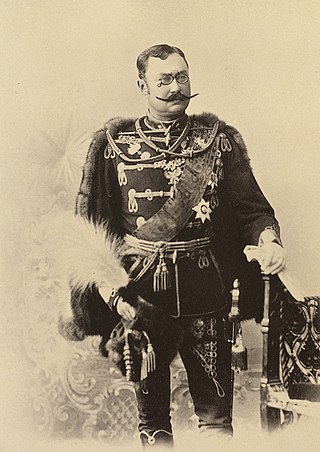
William IV was Grand Duke of Luxembourg from 17 November 1905 until his death in 1912. He succeeded his father, Adolphe. Like his father, William mostly stayed out of politics despite being vested with considerable power on paper by the Constitution.

Prince Guillaume, Hereditary Grand Duke of Luxembourg, is the heir apparent to the crown of Luxembourg, holding the position since his father's accession in 2000.

Prince Lorenz of Belgium, Archduke of Austria-Este is a member of the Belgian royal family as the husband of Princess Astrid of Belgium. He is the head of the House of Austria-Este, a cadet branch of the House of Habsburg-Lorraine; he has held this position since 1996.

Princess Alexandra of Luxembourg is the fourth child and only daughter of Henri, Grand Duke of Luxembourg, and Maria Teresa, Grand Duchess of Luxembourg. Alexandra is also "Princess of Nassau" and "Princess of Bourbon-Parma".

The Order of the Oak Crown is an order of the Grand Duchy of Luxembourg.

The coat of arms of Luxembourg has its origins in the Middle Ages and was derived from the arms of the Duchy of Limburg, in modern-day Belgium and the Netherlands. In heraldic language, the arms are described as: Barry of ten Argent and Azure, a Lion rampant queue forchée Gules crowned, armed and langued Or.
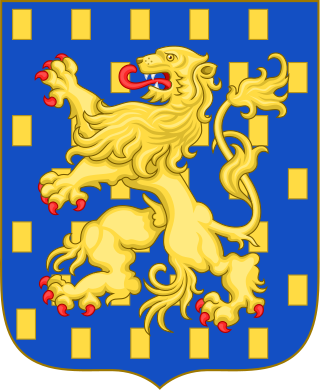
The House of Nassau is a diversified aristocratic dynasty in Europe. It is named after the lordship associated with Nassau Castle, located in present-day Nassau, Rhineland-Palatinate, Germany. With the fall of the Hohenstaufen in the first half of the 13th century royal power within Franconia evaporated and the former stem duchy fragmented into separate independent states. Nassau emerged as one of those independent states as part of the Holy Roman Empire. The lords of Nassau were originally titled "Count of Nassau", subject only to the Emperor, and then elevated to the princely class as "Princely Counts". Early on they divided into two main branches: the elder (Walramian) branch, that gave rise to the German king Adolf, and the younger (Ottonian) branch, that gave rise to the Princes of Orange and the monarchs of the Netherlands.
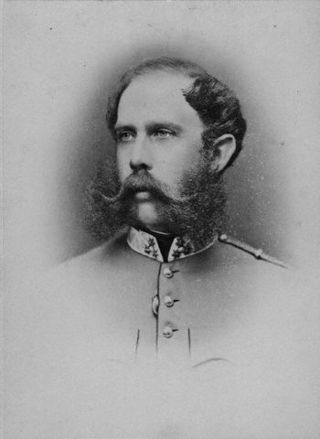
Archduke Karl Ludwig Josef Maria of Austria was the younger brother of both Franz Joseph I of Austria and Maximilian I of Mexico, and the father of Archduke Franz Ferdinand of Austria (1863–1914), whose assassination ignited World War I. His grandson was the last emperor of Austria, Charles I.
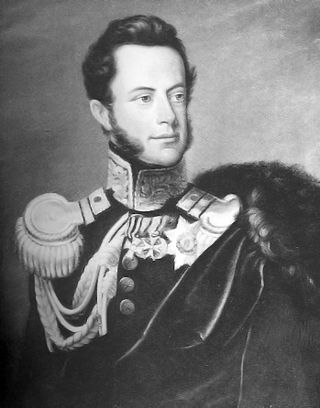
Wilhelm was joint sovereign Duke of Nassau, along with his father's cousin Frederick Augustus, reigning from 1816 until 1839. He was also sovereign Prince of Nassau-Weilburg from 1816 until its incorporation into the duchy of Nassau.
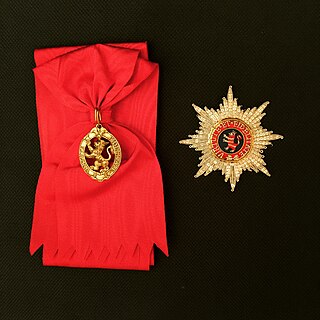
The House Order of the Golden Lion was an order of the German Landgraviate and Electorate of Hesse-Kassel and later, the Grand Duchy of Hesse and by Rhine. It was first instituted in 1770 by Landgrave Frederick II, in honour of and under the patronage of Saint Elizabeth of Hungary, an ancestor of the House of Hesse, and was intended to award auspicious merit.
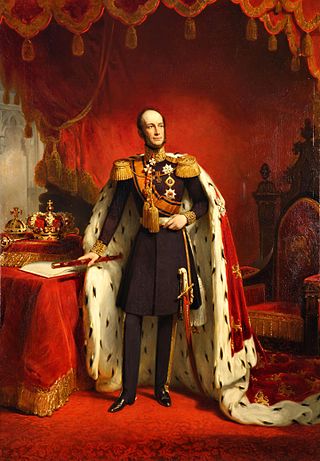
William II was King of the Netherlands, Grand Duke of Luxembourg, and Duke of Limburg.

Princess Marie of Nassau was the eighth child and fourth daughter of William, Duke of Nassau and wife of Hermann, 4th Prince of Wied. She was the mother of Queen Elisabeth of Romania.
This page shows the coats of arms, heraldic achievements, and heraldic flags of the House of Nassau.




















